Characterization and Testing of the Passive Magnetic Attitude Control System for the 3U AstroBio CubeSat
Abstract
:1. Introduction
2. Theoretical Background and Experimental Setup
- Four cylindrical neodymium magnets with an outer and inner diameter of 7 and 3.4 mm, respectively, and a height of 11.5 mm, located on the thin edge of one of interface rib (see Figure 3a,b);
- Four hysteresis strips, obtained from a coil of EFI Alloy 79 annealed, with width mm and thickness mm, selected because of the high relative permeability of the material = 461,000, located within the slots of volume mm3 realized on each one of the four outer panels (see Figure 3c,d), and fixed by using a space qualified bi-component epoxy resin.
2.1. Permanent Magnets
2.2. Hysteresis Dampers
2.3. Passive Magnetic Attitude Control
3. Experimental Characterization of the Passive Magnetic Attitude Control System
3.1. Helmholtz Cage and Spherical Air-Bearing
- using an orbit propagator, the position of the satellite is updated in time;
- using a model for the geomagnetic field the value corresponding to is calculated, here the International Geomagnetic Reference Field-13 (IGRF) model is used [32]);
- the actual in the test volume of the Helmholtz cage is measured from a three-axis magnetometer;
- the vector is calculated and the value of I corresponding to each component of are computed inverting Equation (12); and
- a dedicated power supply, actuated by the computer, provides the electric current I to each pair of coils.
3.2. Experimental Characterization of the Hysteresis Strips
- A desired profile of the magnetic field (H) is recreated inside the Helmholtz cage. Two cases were examined for ABCS, with limit values of the magnetic field compatible with the ones in the operative orbit:
- (a)
- Triangular variation between A/m;
- (b)
- Sinusoidal variation between A/m;
- The magnetic flux density on the surface of the hysteresis strip is measured using a magnetic field probe operating at a sampling frequency of 10 Hz; and
- The hysteresis loop is reconstructed, the value of is calculated from Equation (11).
3.3. Experimental Evaluation of the Stabilization Performance
- The testbed, equipped with the PMACS, is integrated to the spherical support and placed inside the Helmholtz cage with known attitude. For the test case examined hereafter, the testbed is the engineering unit of ABCS, that was placed in the Helmholtz cage with axis parallel to the local vertical direction, as shown in Figure 6.
- The testbed is spun at a known angular rate. ABCS was spun at an angular rate of /s, representative of the deployment conditions.
- The angular velocity () and the magnetic field () are measured by using calibrated three-axis gyroscope and magnetometer fixed to the testbed. For ABCS, a datalogger operating at a sampling frequency of 100 Hz was used. The angular acceleration is computed from the measured data.
- The last one of Equations (8) is used to determine , given the known tensor of inertia for the testbed. In particular, for ABCS the component was computed based on the following tensor of inertia evaluated in ,
- Finally, is computed from Equation (3).
4. Numerical Analysis and Validation of the Passive Magnetic Attitude Control System
4.1. Numerical Analysis
4.2. Analysis of Flight Data
5. Conclusions
Author Contributions
Funding
Conflicts of Interest
References
- Iannascoli, L.; Nascetti, A.; Carletta, S.; Schirone, L.; Meneghin, A.; Brucato, J.R.; Paglialunga, D.; Poggiali, G.; Pirrotta, S.; Impresario, G.; et al. AstroBio CubeSat: Enabling technologies for astrobiology research in space. In Proceedings of the 71st International Astronautical Congress—The CyberSpace Edition, Virtual Online, 12–14 October 2020; p. x60795. [Google Scholar]
- Meneghin, A.; Brucato, J.R.; Paglialunga, D.; Nascetti, A.; Fiacco, G.; Pirrotta, S.; Odogoudra, N.; Carletta, S.; Schirone, L.; Granello, P.; et al. AstroBio CubeSat: A nanosatellite for astrobiology experiments in space. Adv. Astronaut. Sci. 2020, 173, 197–205. [Google Scholar]
- Paglialunga, D.; Iannascoli, L.; Calabria, D.; Trozzi, I.; Marchegiani, E.; Zangheri, M.; Guardigli, M.; Mirasoli, M.; Brucato, J.R.; Meneghin, A.; et al. AstroBio CubeSat: On-Ground Validation of Lab-on-Chip Based Astrobiology Experiments. Lect. Notes Electr. Eng. 2023, 918, 14–20. [Google Scholar]
- Graziani, F.; Sparvieri, N.; Carletta, S. A low-cost earth-moon-mars mission using a microsatellite platform. In Proceedings of the 71st International Astronautical Congress (IAC), Virtual Online, 12–14 October 2020; p. x61563. [Google Scholar]
- Sqwyer, D.M.; Vette, J.J. Ap-8 Trapped Proton Environment for Solar Maximum and Solar Minimum; NASA-TM-X–72605; National Aeronautics and Space Administration: Greenbelt, MD, USA, 1976. [Google Scholar]
- Carletta, S.; GosikereMatadha, S.S.; Ramesh, S.V.; Iannascoli, L.; Paglialunga, D.; Nascetti, A.; Schirone, L. Design and experimental characterization of the passive magnetic attitude control system for the 3U AstroBio CubeSat. In Proceedings of the 72nd International Astronautical Congress (IAC), Dubai, United Arab Emirates, 12–14 October 2020; p. x64701. [Google Scholar]
- Wertz, J.R. Spacecraft Attitude Determination and Control; Springer: Dordrecht, The Netherlands, 1978. [Google Scholar]
- Bozorth, R.M. Ferromagnetism; Van Nostrand: New York, NY, USA, 1951. [Google Scholar]
- Ismailova, A.; Zhilisbayeva, K. Passive Magnetic Stabilization of the Rotational Motion of the Satellite in its Inclined Orbit. Appl. Math. Sci. 2015, 9, 791–802. [Google Scholar] [CrossRef]
- Danchik, J.R. An Overview of Transit Development. Johns Hopkins APL Tech. Dig. 1998, 19, 18–26. [Google Scholar]
- Kummer, H. Satellite Flight Dynamics Data-Handling Systems. ESA Bull. 1976, 7, 26–31. [Google Scholar]
- Ninomiya, K.; Takezawa, S. Digital simulation of the magnetic attitude stabilization for scientific satellite EXOS-A. In Proceedings of the International Symposium on Space Technology and Science, Tokyo, Japan, 30 June–4 July 1975. [Google Scholar]
- O’Brien, B.J. High-Latitude Geophysical Studies with Satellite Injun-3 part 1: Description of the satellite. J. Geophys. Res. 1964, 69, 1–12. [Google Scholar] [CrossRef]
- Sarychev, V.A.; Ovchinnikov, M.Y. Magnetic Attitude Control Systems for Earth’s Satellites. Itogi Nauki Tekh. Ser. Issled. Kosm. Prostr. 1985, 23. [Google Scholar]
- Ovchinnikov, M.Y. Methods to obtain the principal parameters of simple attitude control systems for small satellites. Acta Astronaut. 1998, 43, 597–605. [Google Scholar] [CrossRef]
- Santoni, F.; Zelli, M. Passive magnetic attitude stabilization of the UNISAT-4 microsatellite. Acta Astronaut. 2009, 65, 792–803. [Google Scholar] [CrossRef]
- Battagliere, M.L.; Santoni, F.; Piergentili, F.; Ovchinnikov, M.; Graziani, F. Passive magnetic attitude stabilization system of the EduSAT microsatellite. Proc. Inst. Mech. Eng. Part G J. Aerosp. Eng. 2010, 224, 1097–1106. [Google Scholar] [CrossRef]
- Battistini, S.; Cappelletti, C.; Graziani, F. Results of the attitude reconstruction for the UniSat-6 microsatellite using in-orbit data. Acta Astronaut. 2016, 127, 87–94. [Google Scholar] [CrossRef]
- Marcelino, G.M.; Filho, E.M.; Martinez, S.V.; Seman, L.O.; Bezerra, E.A. In-orbit preliminary results from the open-source educational nanosatellite FloripaSat-I. Acta Astronaut. 2021, 188, 64–80. [Google Scholar] [CrossRef]
- Ovchinnikov, M.Y.; Ilyin, A.A.; Kupriynova, N.V.; Penkov, V.I.; Selivanov, A.S. Attitude dynamics of the first Russian nanosatellite TNS-0. Acta Astronaut. 2007, 61, 277–285. [Google Scholar] [CrossRef]
- Rhodes, P.; Rowlands, G. Demagnetising energies of uniformly magnetized rectangular blocks. Proc. Leeds Philos. Lit. Soc. Collect. 1954, 6, 191–210. [Google Scholar]
- Flatley, T.W.; Henretty, D.A. A Magnetic Hysteresis Model. In Proceedings of the Flight Mechanics Estimation Theory Symposium 1995, Greenbelt, MD, USA, 16–18 May 1995; pp. 405–416. [Google Scholar]
- Fiorillo, F.; Santoni, F.; Ferrara, E.; Battagliere, M.L.; Bottauscio, O.; Graziani, F. Soft Magnets for Passive Attitude Stabilization of Small Satellites. IEEE Trans. Magn. 2010, 46, 670–673. [Google Scholar] [CrossRef]
- Lee, D.; Springmann, J.C.; Spangelo, S.C.; Cutler, J.W. Satellite Dynamics Simulator Development Using Lie Group Variational Integrator. In Proceedings of the AIAA Modeling and Simulation Technologies Conference, Portland, OR, USA, 8–11 August 2011. [Google Scholar]
- Farrahi, A.; Sanz-Andrés, A. Efficiency of Hysteresis Rods in Small Spacecraft Attitude Stabilization. Sci. World J. 2013, 2013, 459573. [Google Scholar] [CrossRef] [PubMed]
- Sato, M.; Ishli, Y. Simple and approximate expressions of demagnetizing factors of uniformly magnetized rectangular rod and cylinder. J. Appl. Phys. 1989, 66, 983–985. [Google Scholar] [CrossRef]
- Kern, P.R.; da Silva, O.E.; de Siqueira, J.V.; Della Pace, R.D.; Rigue, J.N.; Carara, M. A study on the thickness dependence of static and dynamic magnetic properties of Ni81Fe19 thin films. J. Magn. Magn. Mater. 2016, 419, 456–463. [Google Scholar] [CrossRef]
- Gerhardt, D.T.; Palo, S.E. Passive Magnetic Attitude Control for CubeSat Spacecraft. In Proceedings of the 24th Annual AIAA/USU Conference on Small Satellites, Logan, UT, USA, 9–12 August 2010. [Google Scholar]
- de Ruiter, A.H.; Damaren, C.; Forbes, J.R. Spacecraft Dynamics and Control: An Introduction; John Wiley & Sons. Ltd.: Chichester, UK, 2013. [Google Scholar]
- Ivanov, D.S.; Ovchinnikov, M.Y.; Pen’kov, V.I. Laboratory Study of Magnetic Properties of Hysteresis Rods for Attitude Control Systems of Minisatellites. J. Comput. Syst. Sci. Int. 2013, 52, 145–164. [Google Scholar] [CrossRef]
- Farissi, M.S.; Carletta, S.; Nascetti, A. Design and hardware-in-the-loop test of an active magnetic detumbling and pointing control based only on three-axis magnetometer data. In Proceedings of the 70th International Astronautical Congress (IAC), Washington, DC, USA, 21–25 October 2019. [Google Scholar]
- Thébault, E.; Finlay, C.C.; Zvereva, T. International Geomagnetic Reference Field: The 12th generation. Earth Planets Space 2015, 67, 79. [Google Scholar] [CrossRef] [Green Version]
- Farissi, M.S.; Carletta, S.; Nascetti, A.; Teofilatto, P. Implementation and hardware-in-the-loop simulation of a magnetic detumbling and pointing control based on three-axis magnetometer data. Aerospace 2019, 6, 133. [Google Scholar] [CrossRef] [Green Version]
- Sung, H.; Rudowicz, C. A closer look at the hysteresis loop for ferromagnets—A survey of misconceptions and misinterpretations in textbooks. arXiv 2002, arXiv:cond-mat/0210657. [Google Scholar]
- Carletta, S.; Teofilatto, P. Design and Numerical Validation of an Algorithm for the Detumbling and Angular Rate Determination of a CubeSat Using Only Three-Axis Magnetometer Data. Int. J. Aerosp. Eng. 2018, 2018, 9768475. [Google Scholar] [CrossRef]
- Carletta, S.; Teofilatto, P.; Farissi, M.S. A Magnetometer-Only Attitude Determination Strategy for Small Satellites: Design of the Algorithm and Hardware-in-the-Loop Testing. Aerospace 2020, 7, 3. [Google Scholar] [CrossRef]


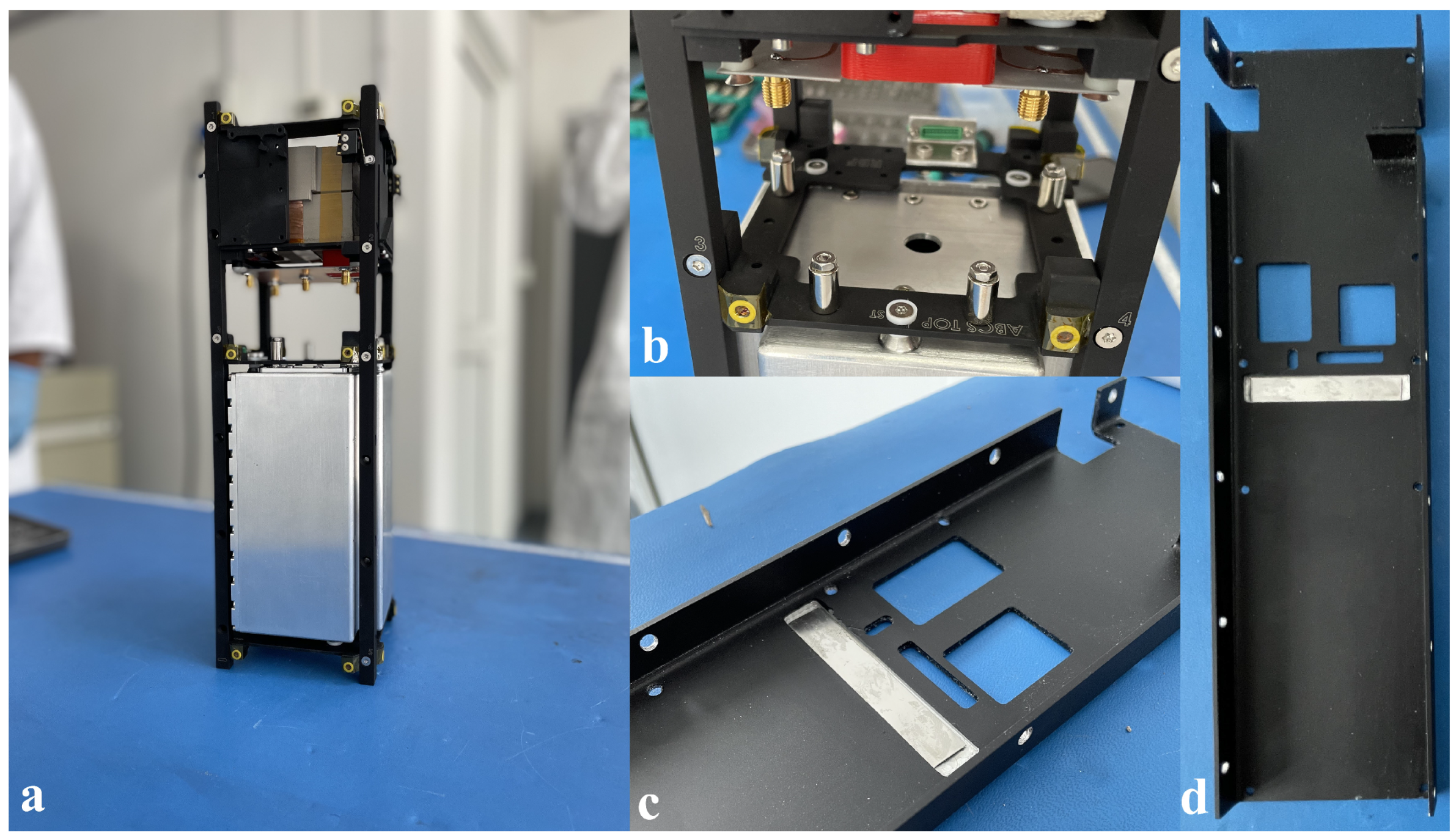

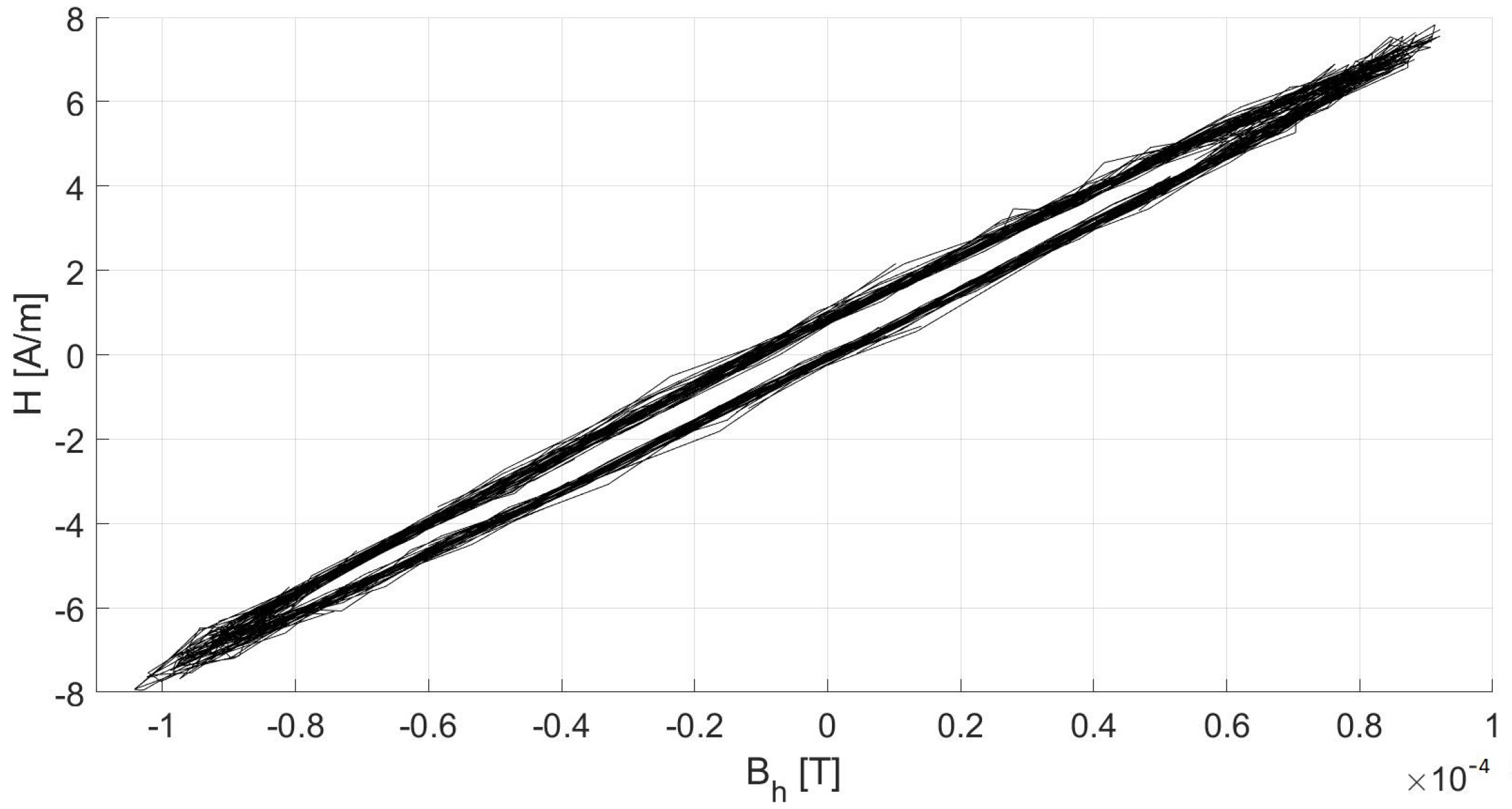
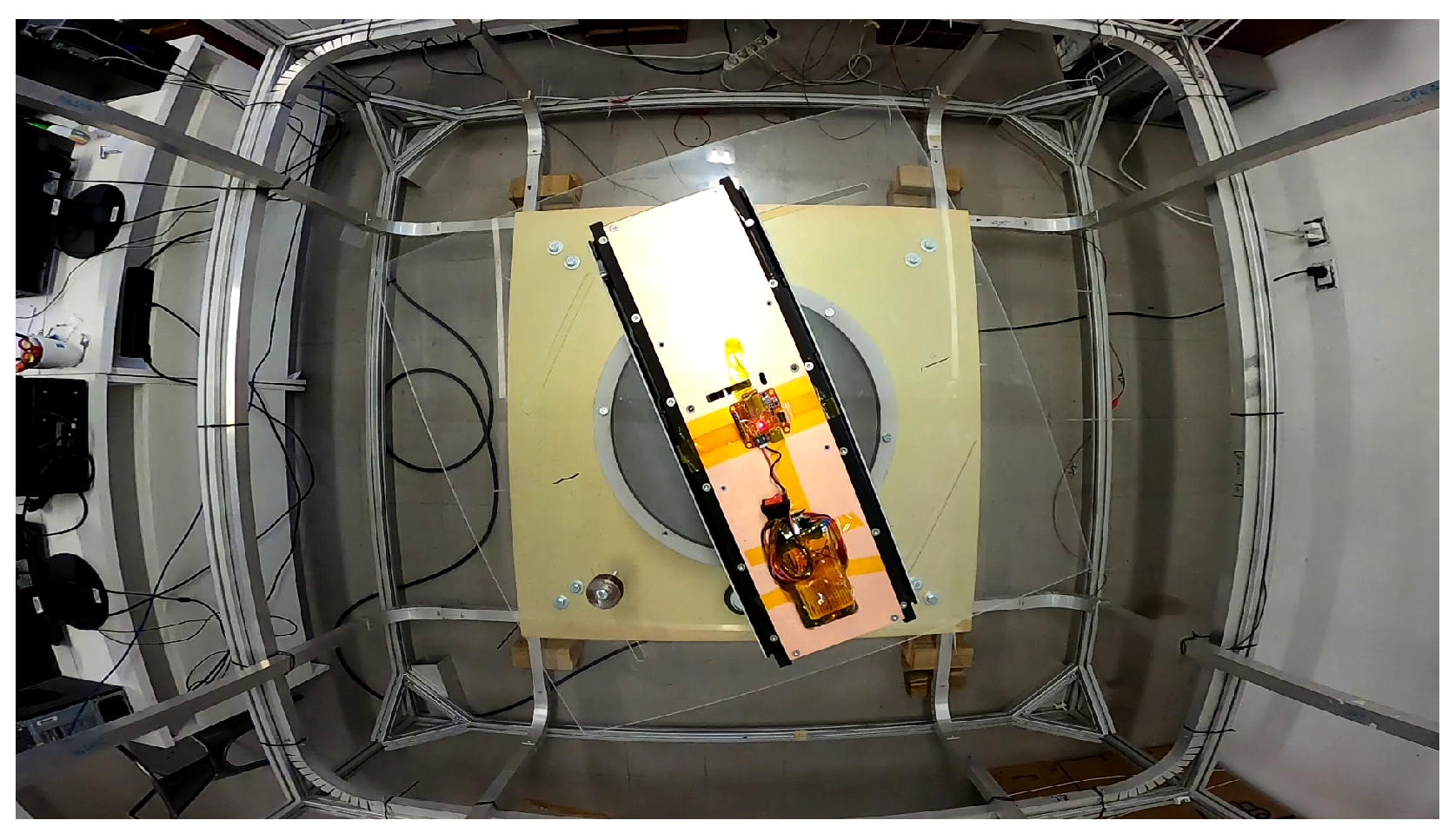


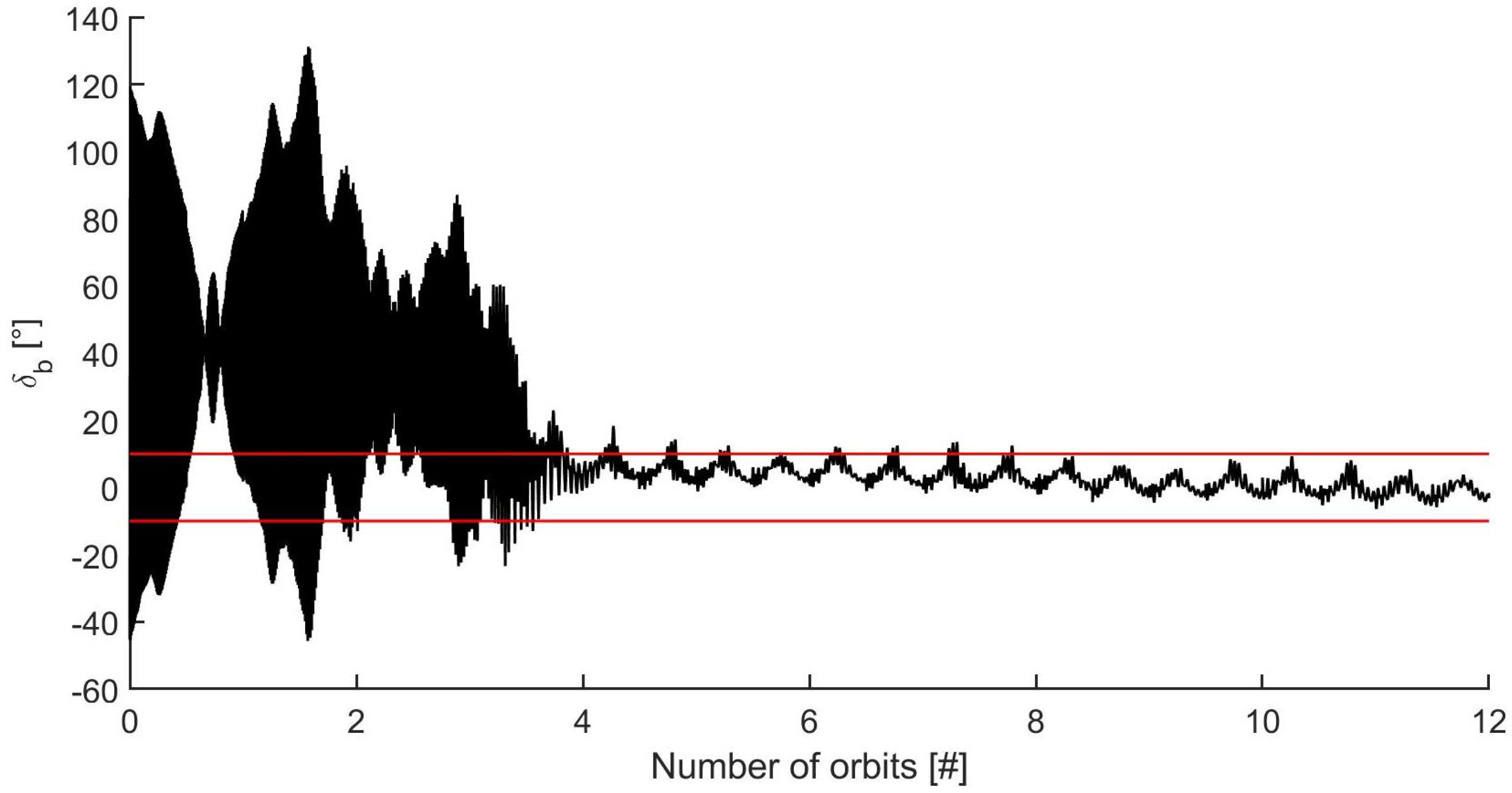


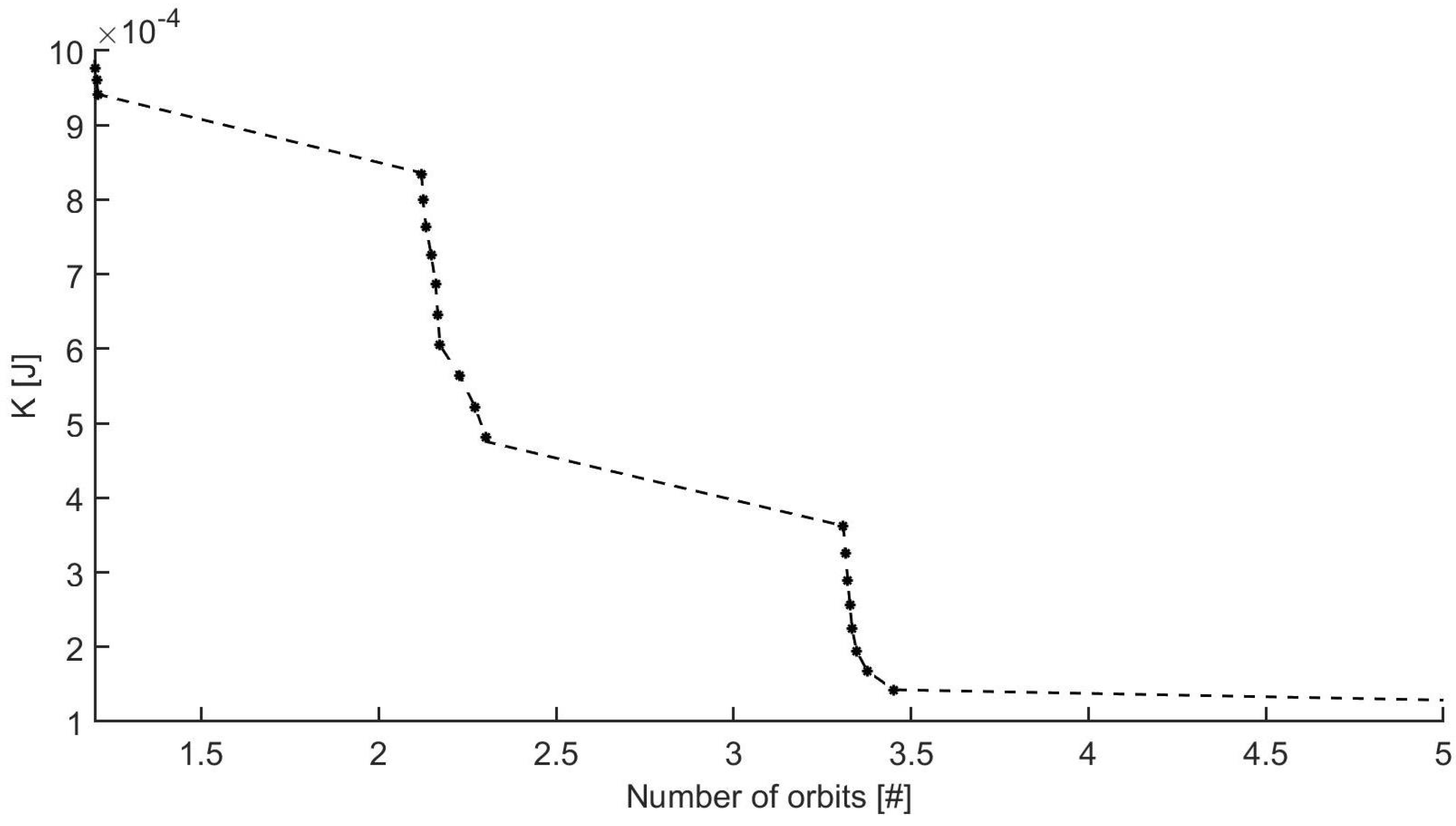
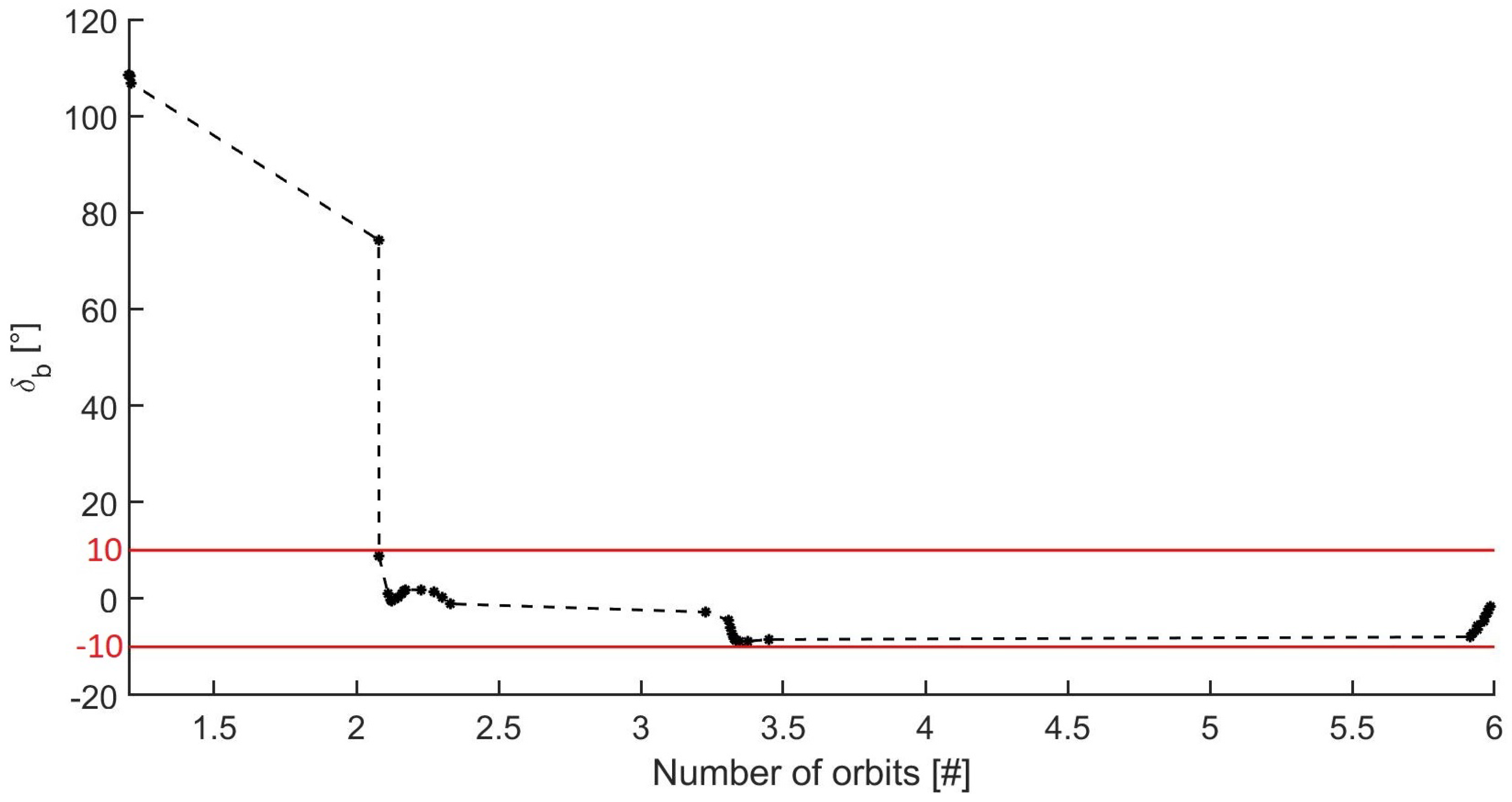
| Parameter | Symbol | Value |
|---|---|---|
| Apparent permeability | 10.6 | |
| Coercivity | 0.4487 A/m | |
| Remanence | 0.3610 T | |
| Saturation induction | 0.6800 T |
Publisher’s Note: MDPI stays neutral with regard to jurisdictional claims in published maps and institutional affiliations. |
© 2022 by the authors. Licensee MDPI, Basel, Switzerland. This article is an open access article distributed under the terms and conditions of the Creative Commons Attribution (CC BY) license (https://creativecommons.org/licenses/by/4.0/).
Share and Cite
Carletta, S.; Nascetti, A.; Gosikere Matadha, S.S.; Iannascoli, L.; Baratto de Albuquerque, T.; Maipan Davis, N.; Schirone, L.; Impresario, G.; Pirrotta, S.; Brucato, J.R. Characterization and Testing of the Passive Magnetic Attitude Control System for the 3U AstroBio CubeSat. Aerospace 2022, 9, 723. https://doi.org/10.3390/aerospace9110723
Carletta S, Nascetti A, Gosikere Matadha SS, Iannascoli L, Baratto de Albuquerque T, Maipan Davis N, Schirone L, Impresario G, Pirrotta S, Brucato JR. Characterization and Testing of the Passive Magnetic Attitude Control System for the 3U AstroBio CubeSat. Aerospace. 2022; 9(11):723. https://doi.org/10.3390/aerospace9110723
Chicago/Turabian StyleCarletta, Stefano, Augusto Nascetti, Sagar S. Gosikere Matadha, Lorenzo Iannascoli, Thiago Baratto de Albuquerque, Nithin Maipan Davis, Luigi Schirone, Gabriele Impresario, Simone Pirrotta, and John R. Brucato. 2022. "Characterization and Testing of the Passive Magnetic Attitude Control System for the 3U AstroBio CubeSat" Aerospace 9, no. 11: 723. https://doi.org/10.3390/aerospace9110723
APA StyleCarletta, S., Nascetti, A., Gosikere Matadha, S. S., Iannascoli, L., Baratto de Albuquerque, T., Maipan Davis, N., Schirone, L., Impresario, G., Pirrotta, S., & Brucato, J. R. (2022). Characterization and Testing of the Passive Magnetic Attitude Control System for the 3U AstroBio CubeSat. Aerospace, 9(11), 723. https://doi.org/10.3390/aerospace9110723










